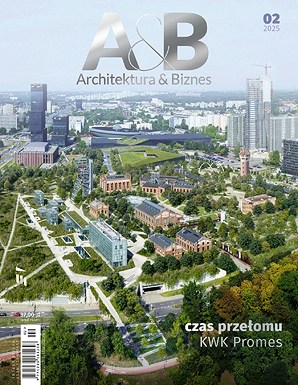Nicolas Ruinart Pavilion,
designed by Sou Fujimoto Architects
In the heart of the historic capital of Champagne, a modern pavilion has been built for visitors to the oldest champagne factory in France - Maison Ruinart in Reims. Designed by the studio Sou Fujimoto Architects,the building combines culture, history, art and innovation into one cohesive whole.
history of Maison Ruinart
Founded in 1729 by Nicolas Ruinart, Maison Ruinart is the world's first champagne production house. However, the history of the brand goes back much earlier, to Benedictine monk Thierry Ruinart (1657-1709), whose intuition contributed to the development of champagne production. After encountering "wine with bubbles" in Paris, his nephew, Nicolas, introduced the idea of establishing the first champagne house in Reims. In the mid-1800s, Ruinart acquired the chalk basement beneath the city, which became a symbol of the brand.
Nicolas Ruinart's pavilion in Reims, Champagne - a bird's eye view of the pavilion and Maison Ruinart
photo by Ivan Baan © Sou Fujimoto Architects
a dialogue between tradition and modernity
in form and material
The pavilion is distinguished by subtle curves that contrast with the straight lines of nearby historic buildings. The building, on the plan of an isosceles trapezoid, with concave sides (except for the longest one), was built from local Soissons sandstone, which pays respect to regional building traditions. Wood and glass were also used in the construction.
Nicolas Ruinart Pavilion in Reims, Champagne - projection
© Sou Fujimoto Architects
A characteristic element of the pavilion is the asymmetrical, curved roof, as well as the glazed facade, decorated with gradient glass, which is characterized by a smooth transition from transparency in the lower part to white in the upper part of the building. In designing the exterior of the building, the architects were inspired by the appearance of champagne foam floating in a glass.
Nicolas Ruinart Pavilion in Reims, Champagne - a view of the glazed facade with a tonal gradient
Photo by Iwan Baan © Sou Fujimoto Architects
This translucent, light-emitting building is designed to welcome visitors to feel like they are in a jewelry box. It epitomizes the Ruinart House as a descendant of history with snow-white limestone walls, yet a representative of modernity with a graceful open roof
- says Sou Fujimoto
Nicolas Ruinart pavilion in Reims, Champagne - elevation drawing
© Sou Fujimoto Architects
Large-format glazing allows views of avenues of manicured trees and historic buildings from the 19th century. Local artisans played a key role in the project, including stonemason Léon Noël, whose craftsmanship brought authenticity and durability to the pavilion's construction.
Nicolas Ruinart's pavilion in Reims, Champagne - interior view
photo by Ivan Baan © Sou Fujimoto Architects
harmonious contrasts
inside the pavilion
The center of the pavilion houses Maison Ruinart's reception area, as well as office, dining and retail spaces. There is also a lot of free space in the premises, allowing free movement between different zones. The spatial layout has been designed in a way that leads visitors from the twilight, reminiscent of the atmosphere of traditional chalk cellars, toward spacious and light-filled rooms.
Nicolas Ruinart Pavilion in Reims, Champagne - a bird's eye view of the pavilion and Maison Ruinart
Photo by Iwan Baan © Sou Fujimoto Architects
sustainable design:
materials and energy efficiency
The pavilion was designed with sustainability in mind. Natural materials - stone and wood - were used, and advanced green systems such as rainwater harvesting, geothermal heating, reinforced insulation and a UV-blocking façade were incorporated to minimize energy consumption. The building meets French HQE (Haute Qualité Environnementale - high environmental quality) standards, and 80% of the energy sourced for the building comes from renewable sources.
Nicolas Ruinart Pavilion in Reims, Champagne - view of the facade
Photo by Ivan Baan © Sou Fujimoto Architects
The Nicolas Ruinart Pavilion is a modern interpretation of Maison Ruinart's heritage. The integration of modern ecological solutions and the use of local artisans for construction details emphasize the environmental care and sustainability of the project.
Elaborated: Anastazja Dżupina
Illustrations provided courtesy of Sou Fujimoto Architects.
























































